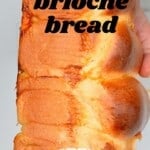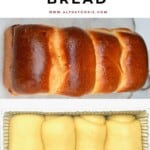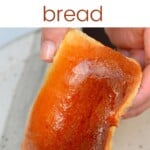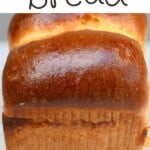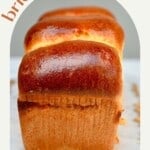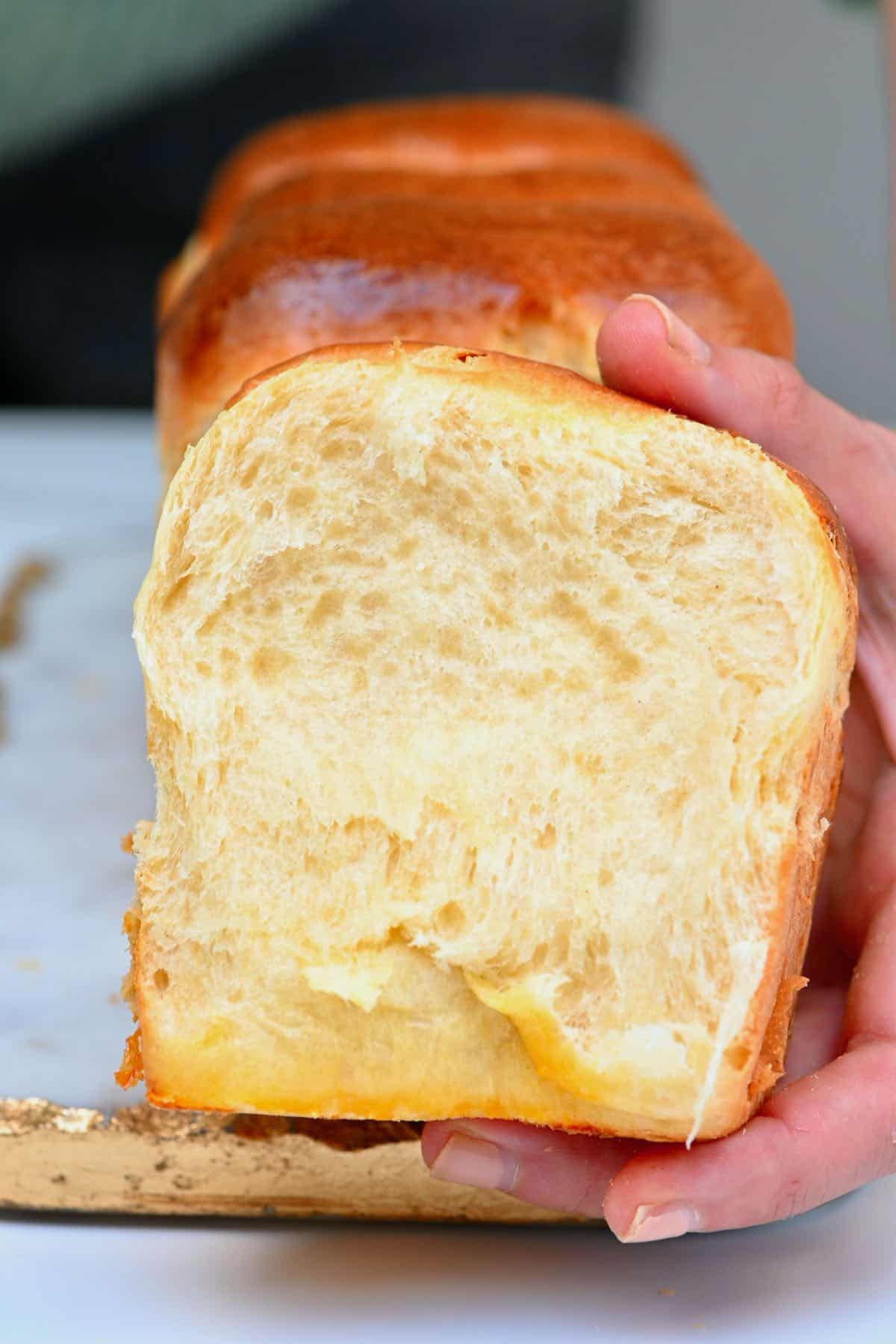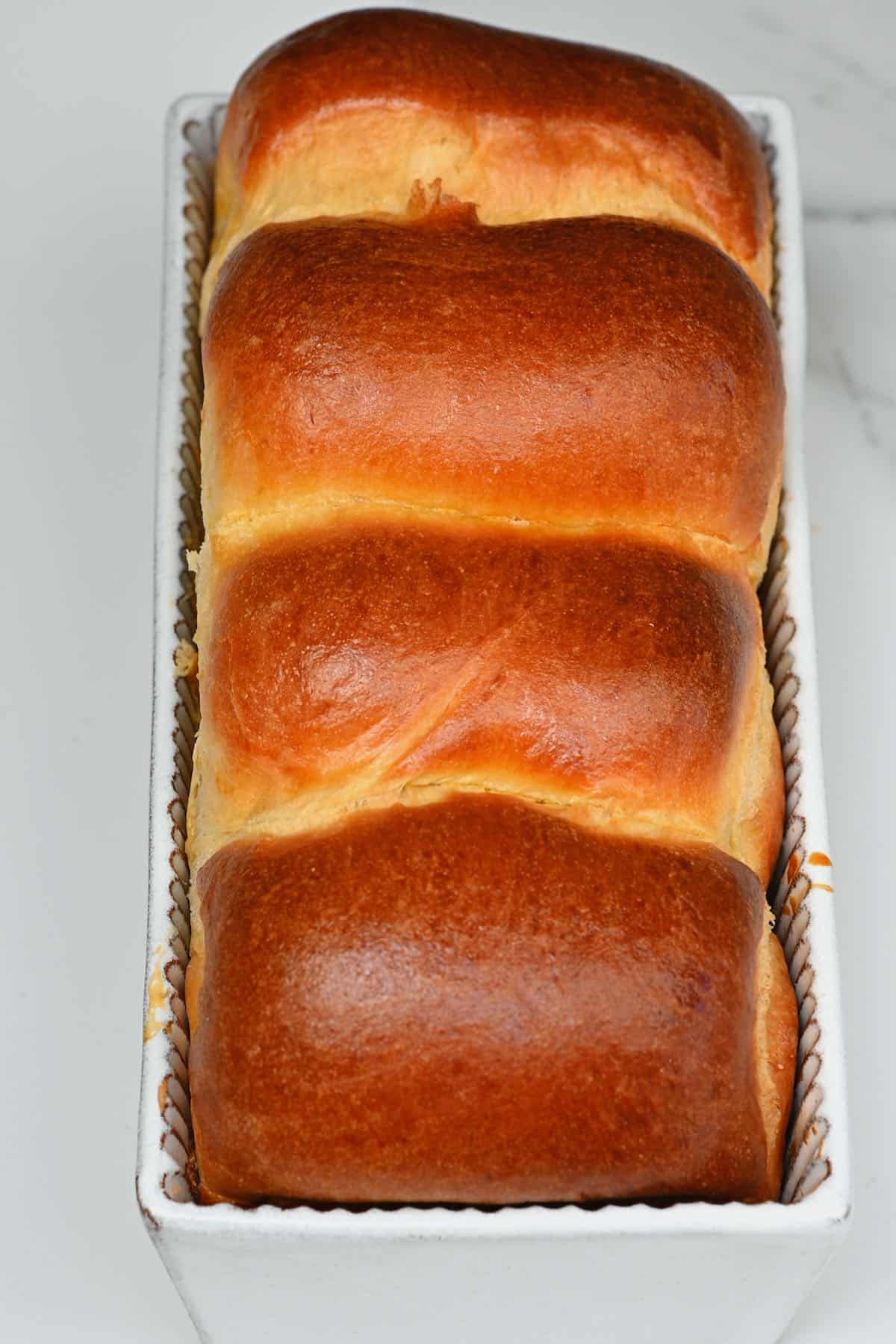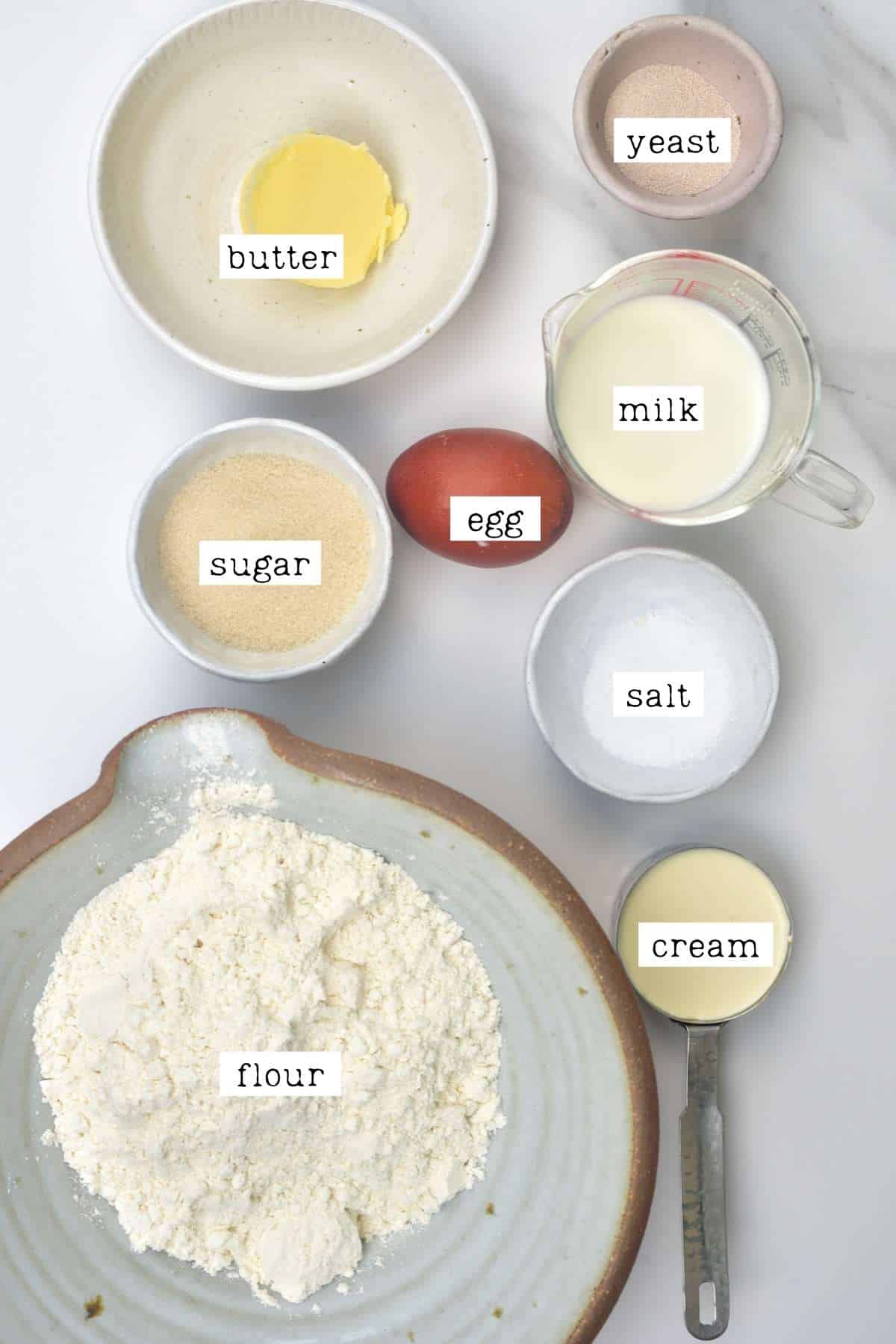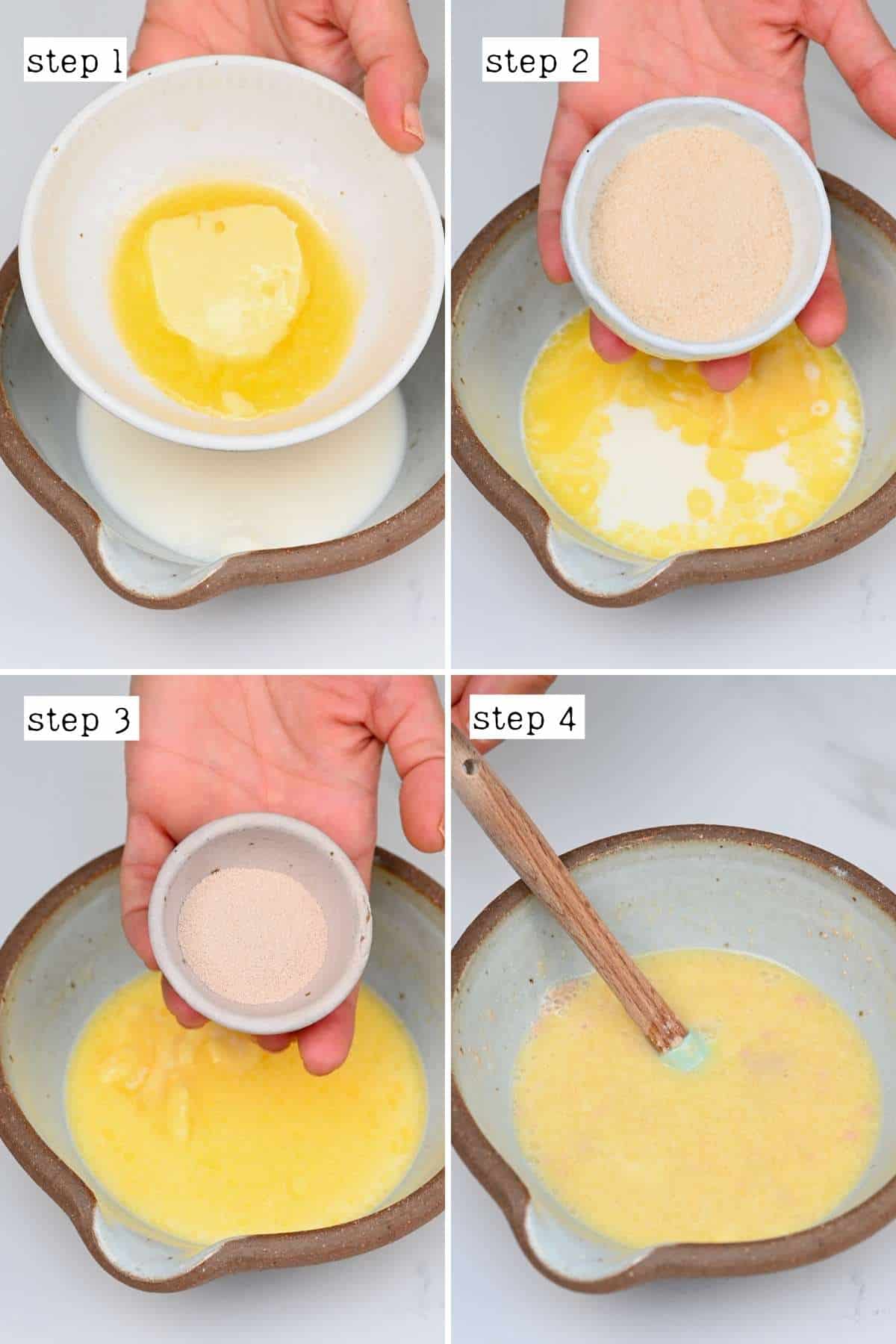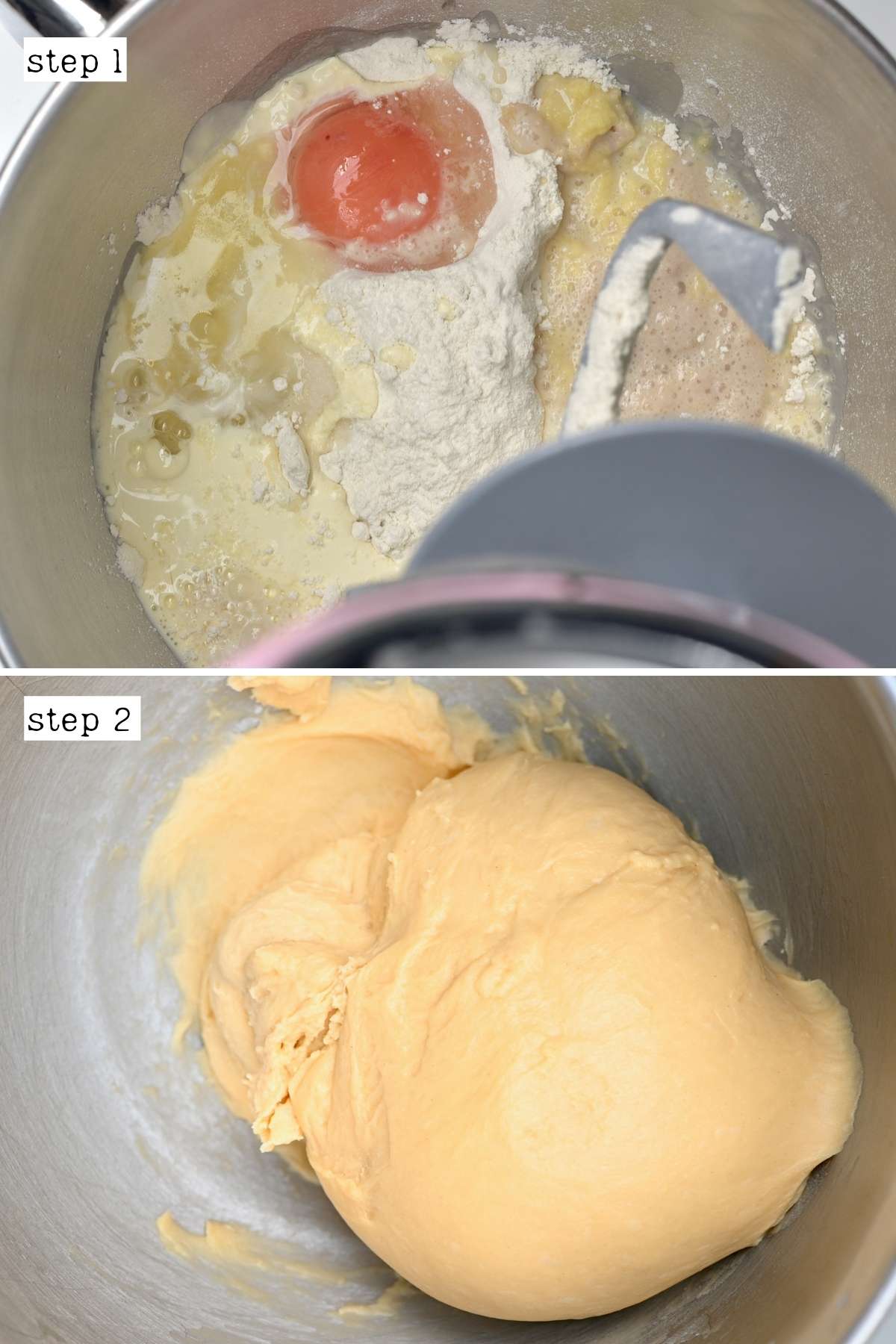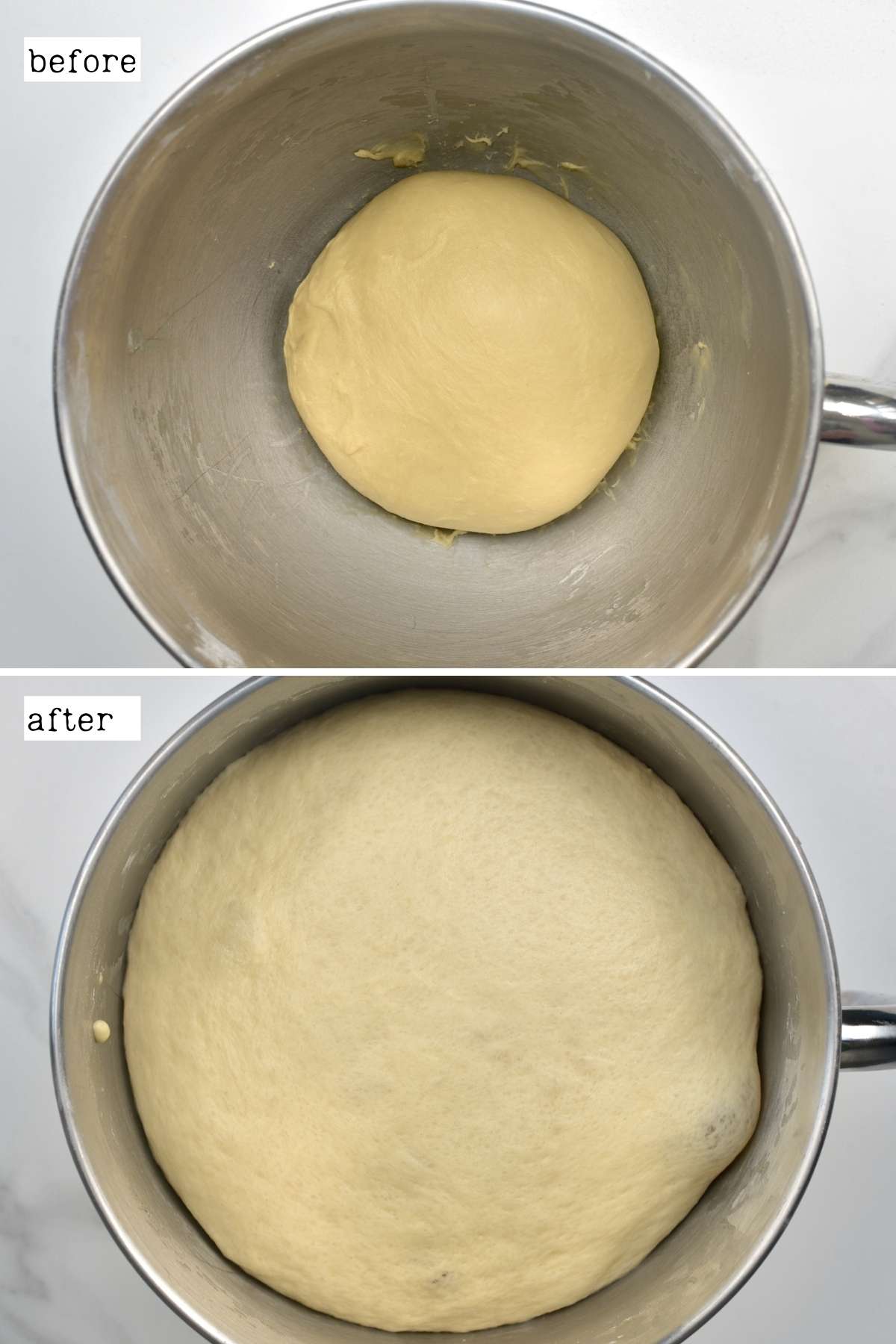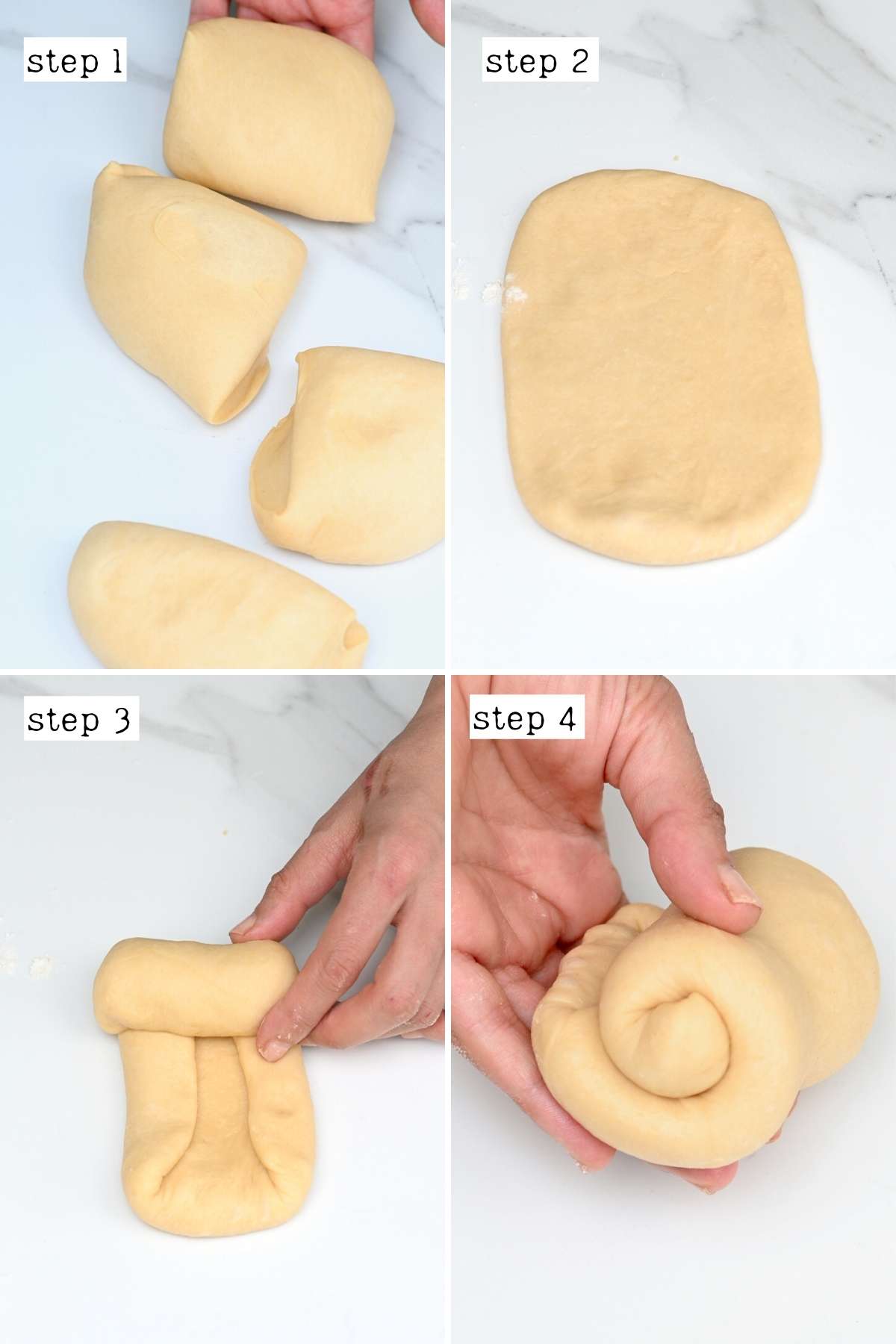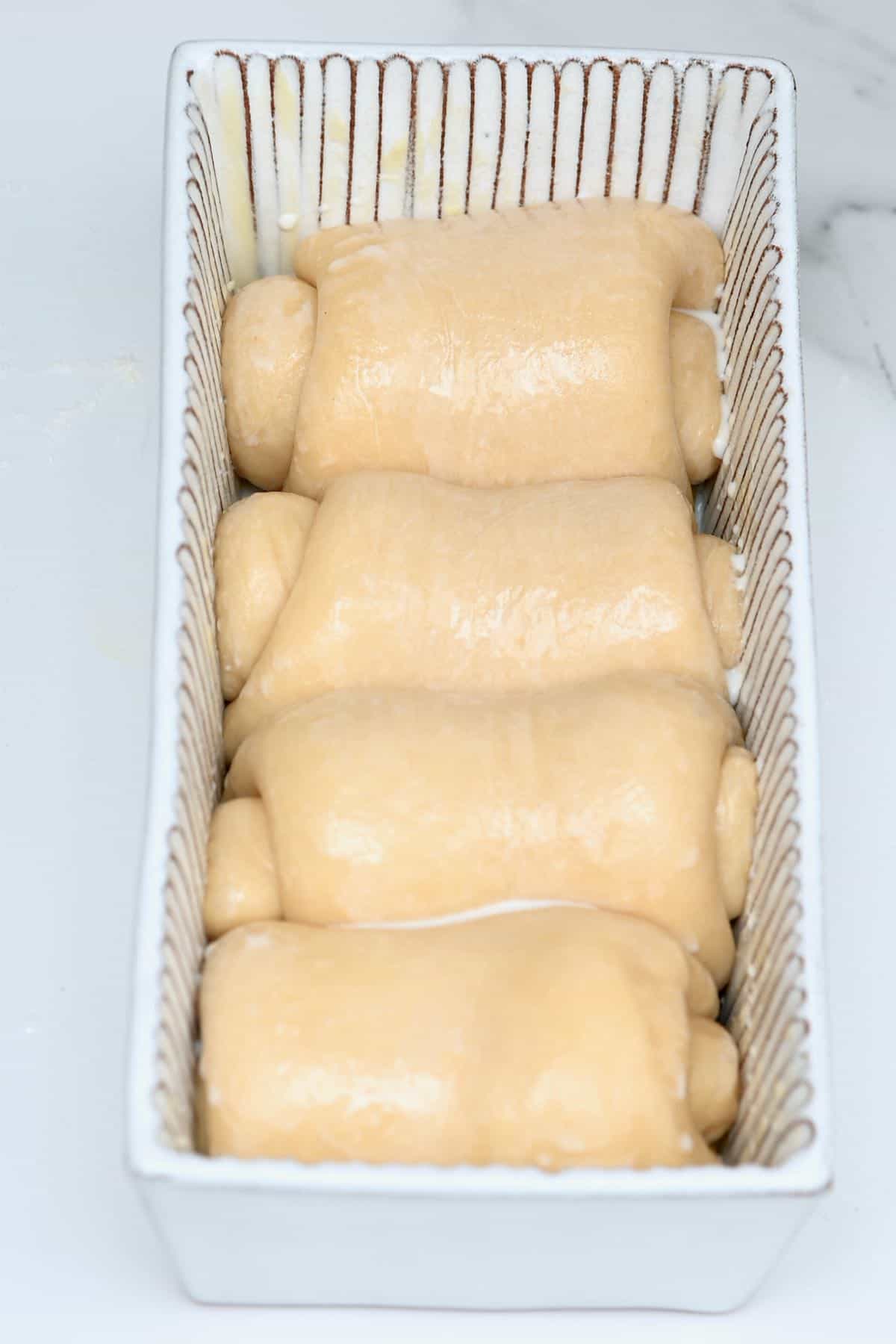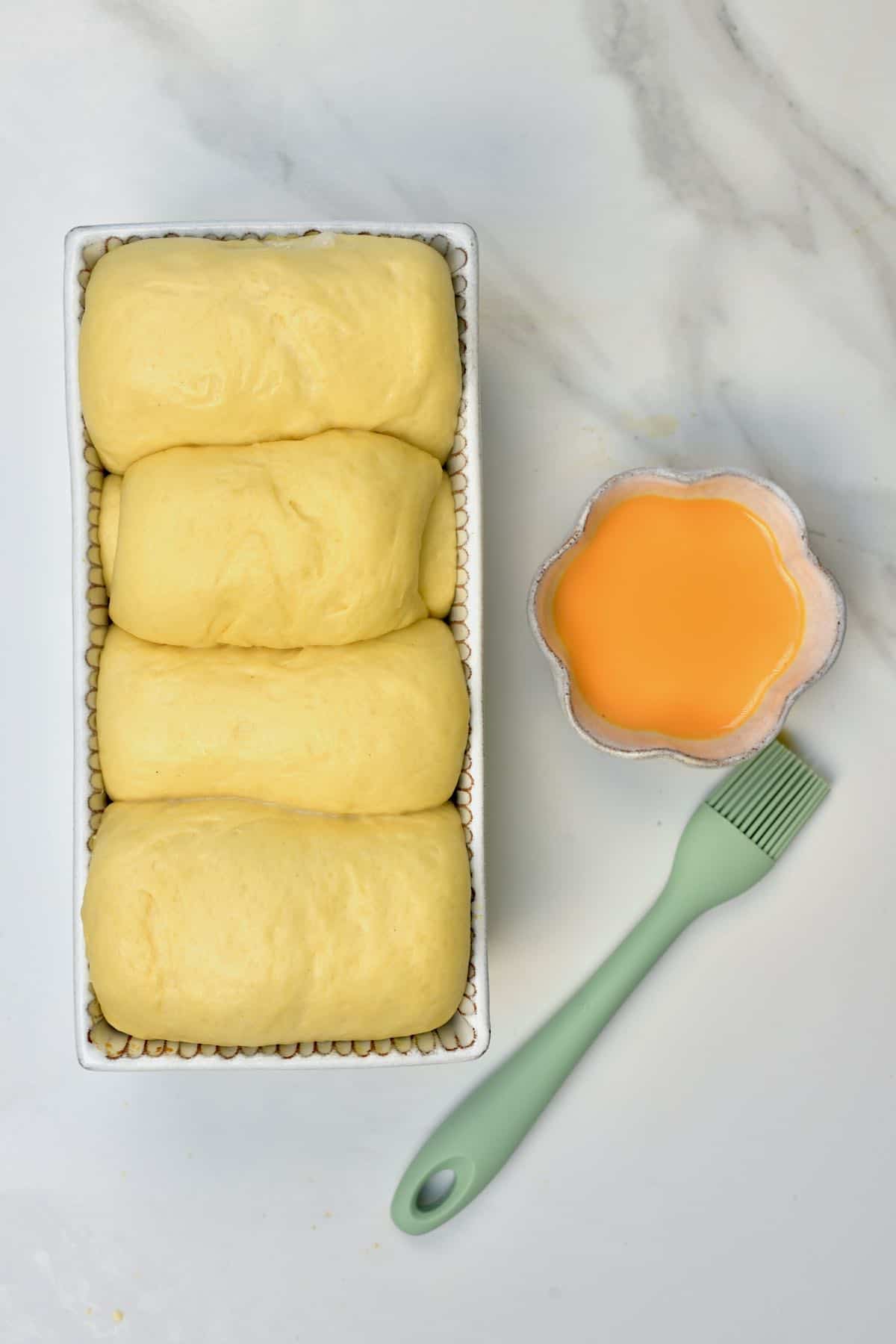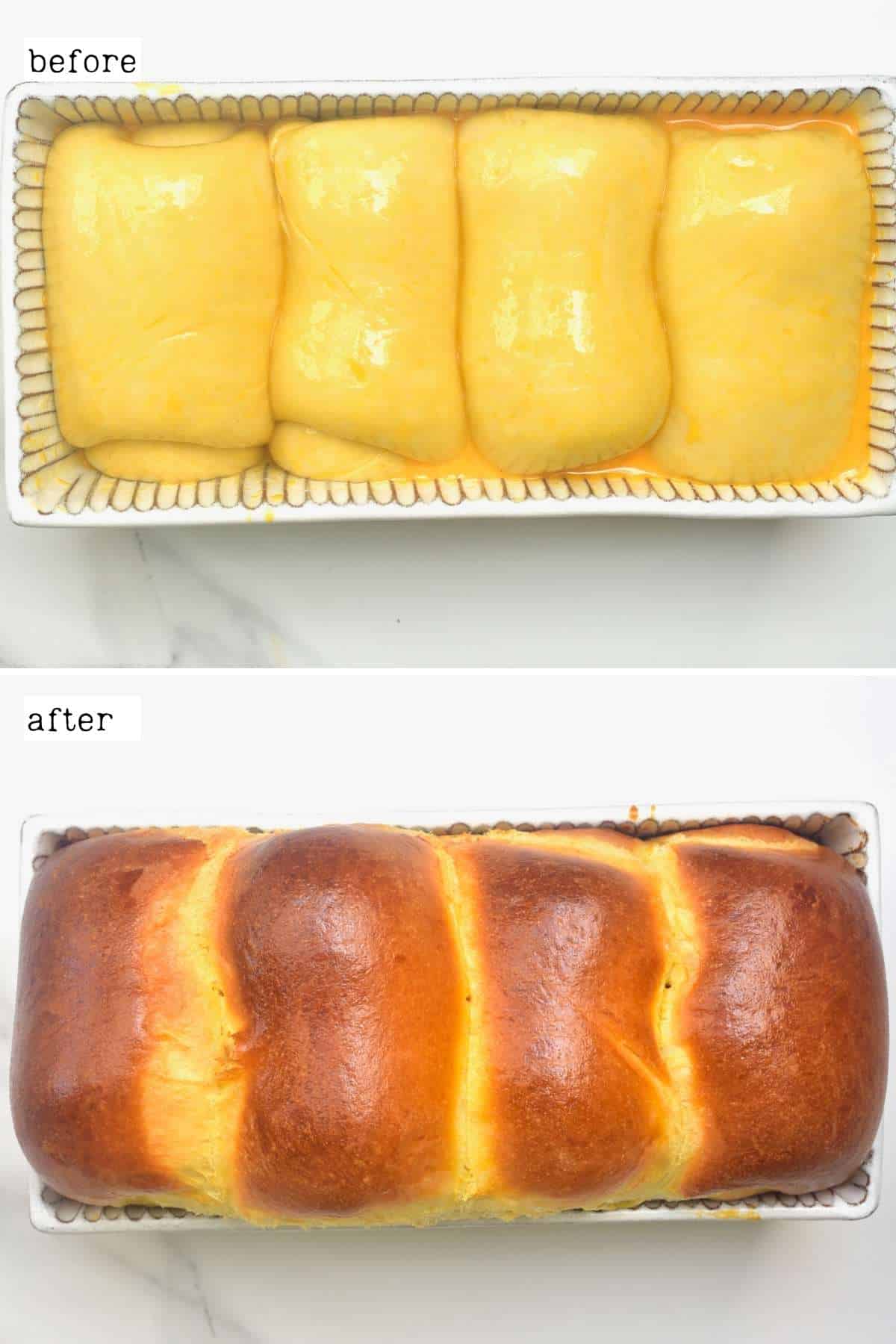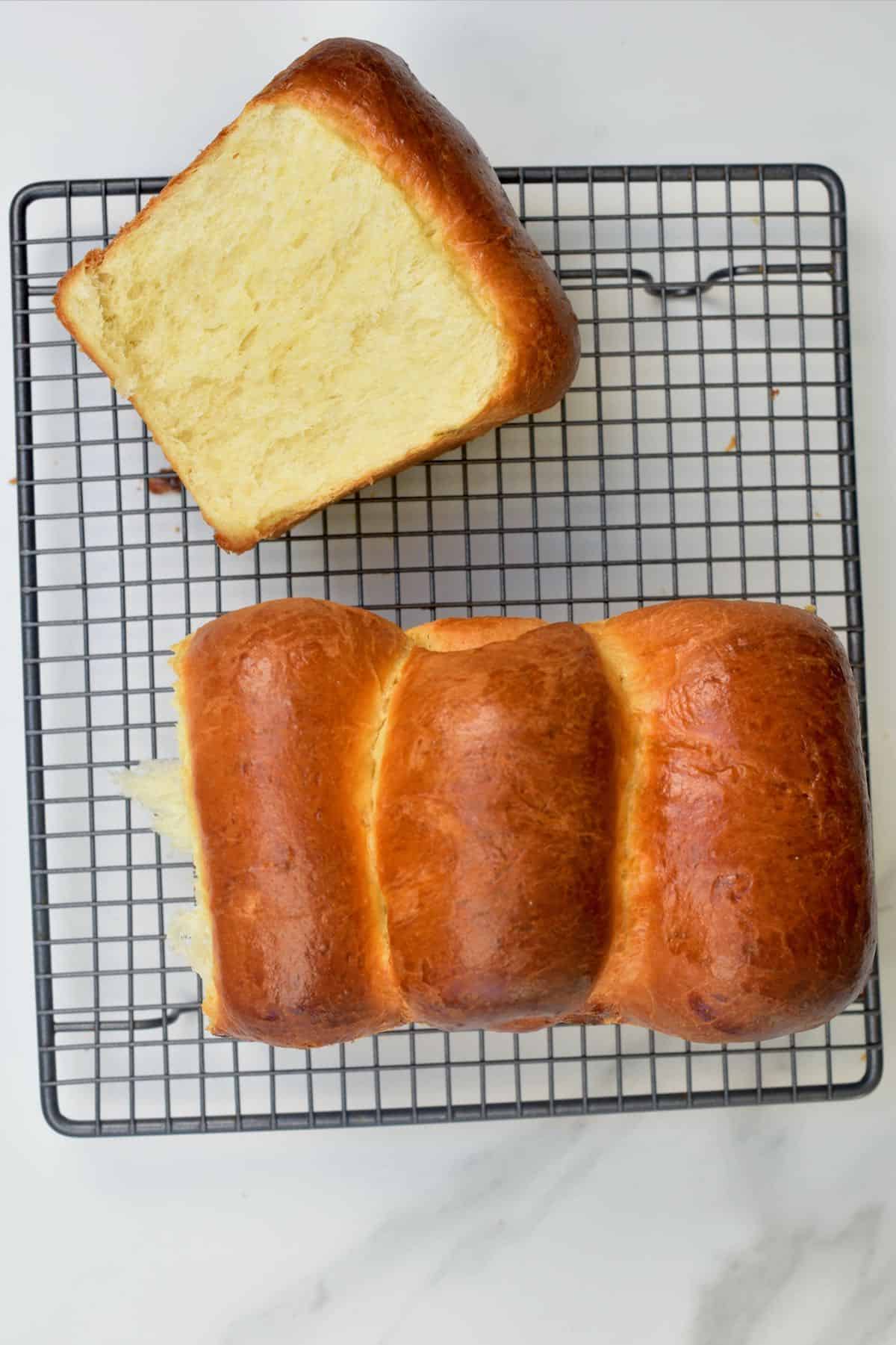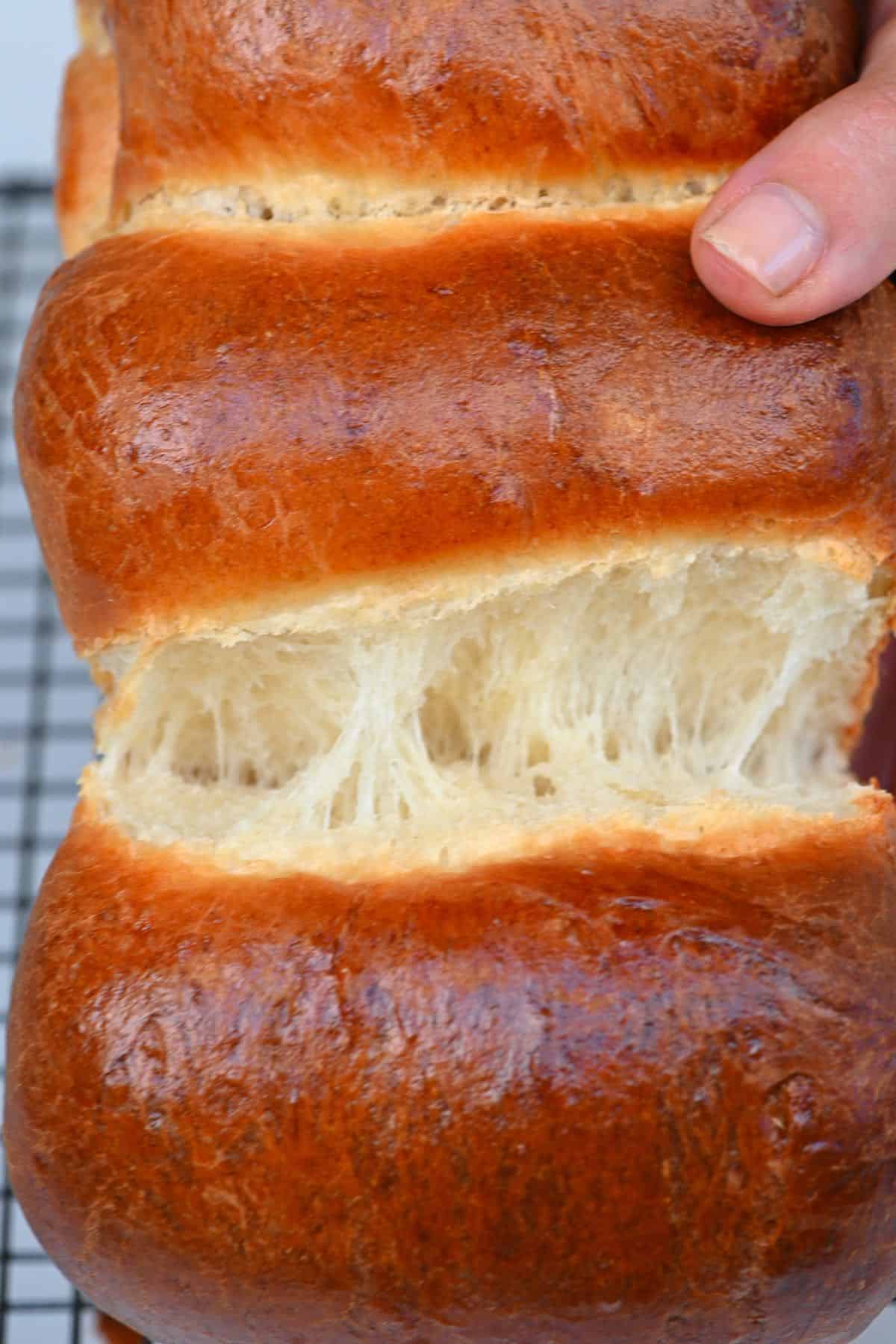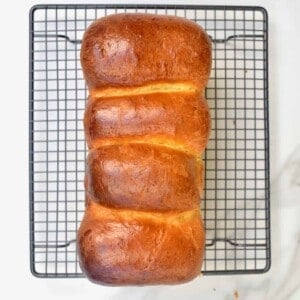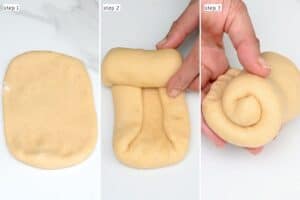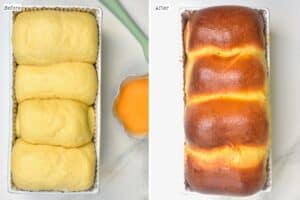The French know how to do bread. Who isn’t tempted by baguettes, pain de champagne, or buttery, flaky croissants at the supermarket or, if you’re lucky, at a proper boulangerie? For a long time, I looked at these classics and assumed they were too tricky to make at home. Not anymore. With a little effort and some know-how, you can create fluffy, pillowy soft homemade brioche bread in your own kitchen.
What Is Brioche Bread
Brioche is a sweet French bread made out of enriched dough. They’re typically known as a viennoiserie – a bread or pastry, like croissants. Made in France since the 15th century, brioche has a dark golden crust and a fluffy, soft interior and can be enjoyed with either sweet or savory recipes. Try making a pain perdu – aka French Toast, bread pudding, or summer pudding with it.
Brioche Bread Ingredients
Flour: You can use all-purpose flour, bread flour, or a combination of the two. Bread flour will make your brioche loaf slightly chewier because of the higher protein content. Dairy: I used a combination of milk and double/heavy cream. Butter: Use unsalted butter as we’ll be adding some for flavor later to your brioche bread. Egg: After LOTS of experimenting, I’ve found just one large egg will get you fluffy results for your brioche. Salt: Just a little to enhance the flavors of the easy brioche recipe. Sugar: Plain white will do – this is needed to activate the yeast. Yeast: I used active dry yeast. You could also use instant yeast (but use 25% less) – this doesn’t need to be activated. Egg Wash: Mix an egg and milk together – this will give the brioche bread its shiny crust.
How to Make Brioche Bread
First, melt the butter either in the microwave in 10-15 second bursts or over a double boiler. Combine the melted butter, milk, sugar, and yeast and set aside for 5 minutes so the yeast activates. Skip this step if you’re using instant yeast, it won’t need activating. You can add all these ingredients to the bowl in the next step.
Making Brioche Bread Dough
You can mix the dough manually or in a stand mixer. Combine the yeast mixture, flour, salt, egg, and cream in a bowl or the bowl of a stand mixer. Mix into a sticky dough, then knead until smooth. This is a moist dough, so it will be sticky. By hand, it may need up to 30 minutes of kneading, though I find it takes closer to 15-20 minutes. When it’s ready, the dough should be smooth and velvety. If you’re using a stand mixer, knead at medium speed for 10-12 minutes with a dough hook attachment. It’ll be ready when you can lift the dough hook and the dough lifts cleanly from the bowl.
Two Methods for Dough Rising
Next, the brioche needs to proof for about 1 hour. Method One: Leave the dough to rise in the bowl for an hour in a warm location. Keep it well covered with plastic wrap or a kitchen towel. Method Two: If it’s winter or you live somewhere cold, preheat your oven to its lowest temperature. Switch off the oven, then leave the dough to rise for 30-60 minutes. During this time, it will double (or even triple) in size. In the meantime, prepare your loaf tin, greasing it with a little oil, butter, or cooking spray.
How to Shape Brioche Dough
Transfer your dough to a lightly floured surface and cut into four equal pieces. I prefer doing it by eye, but you can measure it precisely with a kitchen scale. Flatten each piece until it’s a couple of inches wider than your loaf tin and an even thickness. You should have a rectangular piece like the one in the photo below. To shape, fold each piece in about an inch on both sides (so it fits in your tin), then roll it up. Chef’s Tip: Alternatively, you can create a Nantaise loaf. Divide the dough into eight pieces, roll them into small balls, then place those in the tin in two rows. Or, if you want to make a braided loaf, split the dough into three pieces and roll it into logs the length of the tin. Press the three strands together on one end, braid, and press again on the other end. Tuck in the pressed end and place in the tin.
Getting a Light and Fluffy Brioche with Second Proofing
A second proof will give you the fluffiest brioche bread. Arrange the four pieces into the tin and brush with a bit of milk or water to stop the dough from drying. Leave to rise again for 30 minutes or until it doubles in size. Depending on the temperature and climate of your kitchen, this can take up to 2 hours – so keep an eye on your dough. To test, poke one side of the dough. When fully proofed, it should bounce back just a little. If it bounces back completely, it needs more time.
Bake in Oven
Brush the top of the brioche dough liberally with the egg wash (egg and milk) to get a shiny crust. Bake at 350ºF/175ºC for 25-30 minutes until puffed up and golden brown. Chef’s Tip: You could also use honey mixed with milk, melted butter, or butter and milk instead of an egg wash – each will change how shiny the bread is. If it looks like it’s browning too quickly, cover the brioche bread with foil or place a baking sheet on the rack above your tin to stop it from burning. Remove the brioche from the oven and allow to cool fully on a wire rack before slicing or tearing.
Favorite Ways to Enjoy Brioche Bread
I’ve mentioned a few already, but these are some of my top ways to enjoy brioche bread:
Make pain perdu aka French Toast. Toast a slice and slather it with butter, jam/marmalade (I love strawberry, blackberry, raspberry, ginger, or rose), or homemade Nutella. Use it for savory breakfast toast with creamy sauteed mushrooms. Use for grilled cheese, Croque Madame, or Croque Monsieur. Use for summer pudding or bread pudding. Make breadcrumbs or croutons from leftovers. Use the dough to make hot dog buns, burger buns, filled pastries, etc.
Storing Tips
Storing: The best way how to store brioche bread is in an airtight container or bag – it’ll last for several days and stays soft for 3-4 days. Alternatively, store it in the refrigerator for up to a week. Freeze: To freeze baked brioche, wrap tightly in foil while still slightly warm and place in a freezer-safe bag, removing any air. Seal and freeze for up to 2 months. To defrost, leave it in the fridge overnight to thaw or place the bread in the microwave for a few seconds so it doesn’t get dense. Can you freeze unbaked brioche dough? Yes, you can. I recommend doing the two proofs and then wrapping the dough tightly in plastic wrap. Then place it in an airtight freezer-safe container/bag for up to two weeks. Thaw the dough overnight in the fridge and then proof and bake.
Can I Mix and Knead Brioche by Hand
Yes – but, a mixer makes it so much easier. It’s labor-intensive to get the gluten to develop properly and adding the butter slowly makes things very messy! The mixer is my go-to.
Can I Use This Recipe to Make Brioche Buns
Yes! Divide the dough into 6, 8, or 12 pieces (depending on how big you want the buns to be). Roll each piece into a ball and leave to do their second proof on a baking sheet with a couple of inches of space between them, then bake.
More Bread Recipes
Quick and Easy Blueberry Bread Quick Dinner Rolls No-Knead Focaccia Bread No-Knead Turkish Bread
If you try this French bread brioche recipe, let me know how it goes in the comments below. I’d appreciate a recipe card rating and would love to see your recipe recreations – tag me on Instagram @Alphafoodie!




